List of Authors
>>About this blog
Recent blog post
|
[Many Books]
December 18, 2018 18:00
The other day, the Chuo-ku Tourism Association announced that it was recruiting a "Sewerage Infrastructure Tour", and since it was elected, I participated with my wife on December 14. Meet at Tachikawa Station on the day. 21 participants and the public relations staff of the Tokyo Metropolitan Sewerage Bureau also traveled by bus  . Go to Kitatama No. 2 Water Reclamation Center in Mazu Kunitachi City, go down about 11m by elevator and walk along the tunnel (about 1km) where communication pipes are laid to see . Go to Kitatama No. 2 Water Reclamation Center in Mazu Kunitachi City, go down about 11m by elevator and walk along the tunnel (about 1km) where communication pipes are laid to see    the Asakawa Water Reclamation Center. Attach a pamphlet from the center and a photo the Asakawa Water Reclamation Center. Attach a pamphlet from the center and a photo   of the tunnel on the day. It is said that the diameter is 3.5m after construction using machines used for subway construction and tunnel excavation. of the tunnel on the day. It is said that the diameter is 3.5m after construction using machines used for subway construction and tunnel excavation.
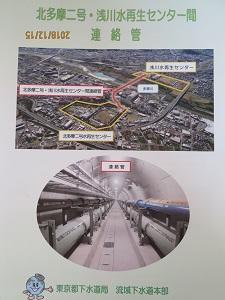
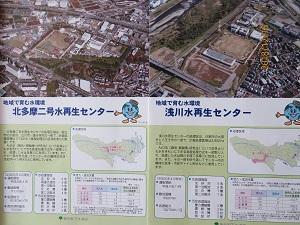 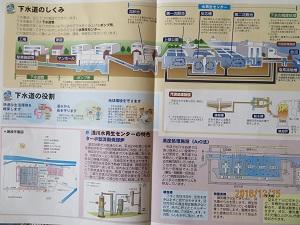
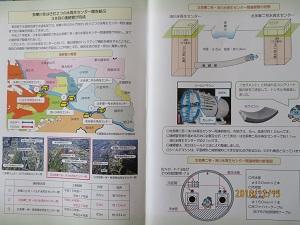 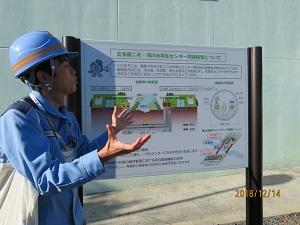
This is the director of the center who explained it.
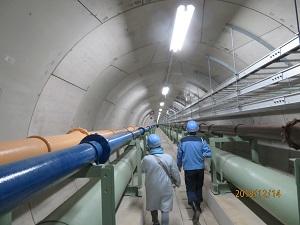 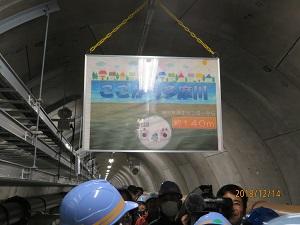
The tunnel passes under the Tama River. The pipes on the left and right of the tunnel are connected to both water reclamation centers so that sewage can be sent to each other (backup when one is damaged). At the Asakawa Water Reclamation Center, we received an explanation of sewage treatment and saw the actual treatment equipment. In the facility, there is no odor, and it is confirmed that the sewage becomes clear water. It was really beautiful. It is released into the river in that state.
This is a photo of the lid of the sewage manhole. The real thing is not colored, but the pink cherry blossoms, yellow ginkgo leaves, and the surrounding area are represented by a black Yurikamome. (Everyone is a symbol of the city?)
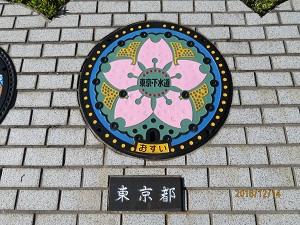
I didn't notice until now, but if you walk with caution, you    can see this manhole everywhere. can see this manhole everywhere.
After that, we moved by bus and observed the construction   of a huge reservoir currently under construction. "Second Tagara River Trunk Line Part 2 Construction" Walk 18m and see a huge tunnel under construction. 40,000 cubic meters of rice (how many cups of 25m pool?) It is said that there is a water storage capacity. Please take of a huge reservoir currently under construction. "Second Tagara River Trunk Line Part 2 Construction" Walk 18m and see a huge tunnel under construction. 40,000 cubic meters of rice (how many cups of 25m pool?) It is said that there is a water storage capacity. Please take    a look at the photo. Concrete segments and steel segments are used properly, and curves and other areas are made of steel and finished with concrete later. Drilling work is underway at the end of this tunnel. The rails are used for trolleys to carry out excavated soil. a look at the photo. Concrete segments and steel segments are used properly, and curves and other areas are made of steel and finished with concrete later. Drilling work is underway at the end of this tunnel. The rails are used for trolleys to carry out excavated soil.
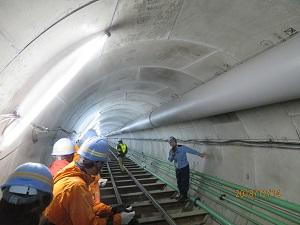
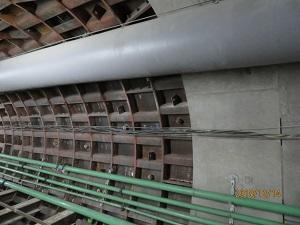 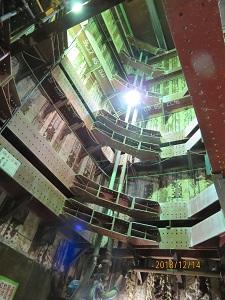
Both the Water Reclamation Center and the Tagara River Main Line are major civil engineering work. However, it is easy to study if you visit facilities for sewage treatment and flood control that are not very familiar in this way. The participant's throat was mentioned, but it was an "adult social studies tour". I hope you will join us once if you have the opportunity. The next time is January 12, but the number of applications seems to be four times. It seems that it was double this time.
[Hanes]
December 11, 2018 14:00
Hello. This is a new correspondent, Hanes. 
If you say, "There has been a billionaire living on the grounds of the Catholic Tsukiji Church," do you believe?
When I heard this story for the first time, I couldn't believe it.
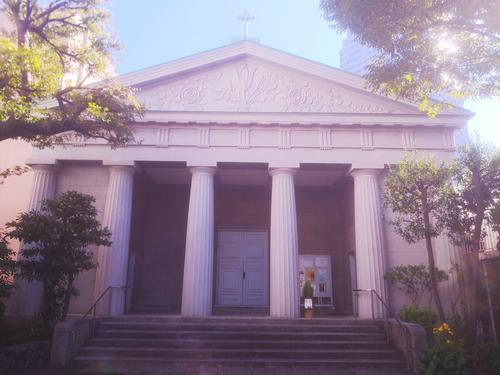
That person is not a believer, but a story before the Great Kanto Earthquake.
There was no material about the person in the church, and "Isn't there any such fact?...At that time, I thought
At a museum in Ibaraki Prefecture, I happened to know that it was a fact.
This time, through such a true story like a lie,
Here is a scene of the history of Tsukiji, which has been rarely known until now.
Time is after the war. In Japan, there were three billionaires called the "Third Leaders after World War II."
Yonetaro Otani, former sumo wrestler and founder of Hotel New Otani
Shunji Minami, President of Osaka Shipbuilding Company
And it is Hiromi Kikuchi, a coal mine manager who will be the main character this time.
In the neighboring Minato-ku, there is the Hiromi Kikuchi Memorial Museum of Art.
Some people may have heard of his name.
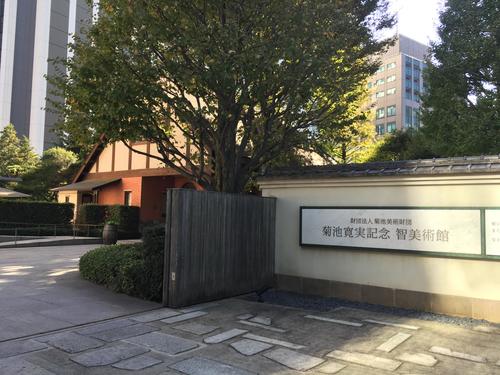
Born in Batomachi, Tochigi Prefecture, he relied on his uncle Fujitaro Yamazaki, who was successful in the coal mine, to go to Tokyo.
At Yamazaki Shoten, located on the canal in Irifune-cho, it was an apprentice to unload coal on the Sumida River.
At that time, there were few houses with indoor bath, so there was a public bath in one town.
He seems to have gone to a public bath to wash away the dirt from coal and pulverized coal.
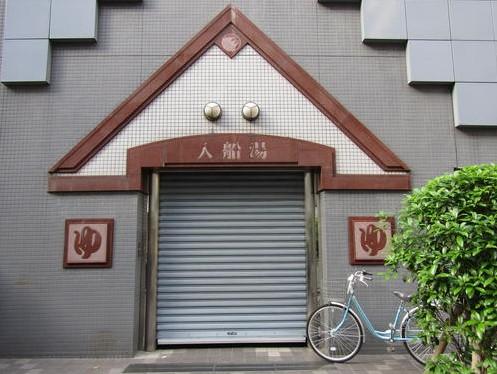
(Maybe it's about Irifuneyu!)
He eventually got married and started living in Akasaka Reinanzaka, near the American Embassy and Hotel Okura.
After that, I will move to Tsukiji Akashicho.
"In 1921, the family moved from the house of Reinanzaka to Tsukiji Akashicho. This house was a building attached to a church adjacent to the Catholic Church in the middle of an old settlement, owned by the Pope. It was built before 1877, it was an old but brick-built Western-style building. The second floor was a residence and the lower floor was used for the office of Tatsunokuchi Coal Mine. It was more dignified than worthy of a newly-built house. "
Hiromi Kikuchi Den (Daishinjuku, 1979), p. 180. ※Not for sale

(Shooted at Kikuchi Hiromi Memorial Takahagi Coal Mine Museum (Takahagi City, Ibaraki Prefecture).)
"In 1921, when the wave of the recession after the recession came in, Kanmi relocated. It was the fifth year of newly married life. Moved from Akasaka Reinanzaka to Tsukiji Akashicho. The new house was not a new building, but a Western-style building attached to the Catholic Church, a house owned by the Pope. It is old because it is 45 years old, but it is a red brick Western-style building that is still rare at that time. Why did you get this house? According to his daughter's wisdom, Hiromi seems to have taken over as the Archbishop of the Pope moved to Reinanzaka. Of the two Western-style buildings, one was used by the company and the other was home. This Akashicho is close to the mouth of the Sumida River, and the view is not bad along the river. Until a few decades ago, there was quite a sense of taste, such as a restaurant overlooking the river. Originally, only after the so-called Tsukiji settlement in the early Meiji era, and in the Taisho era, the remnants of the settlement were still known as the new Tokyo landscape. "
Mitsugu Saotome, "Like a Thousand: The Life of Hiromi Kikuchi" (2008, Hara Shobo), p. 119.
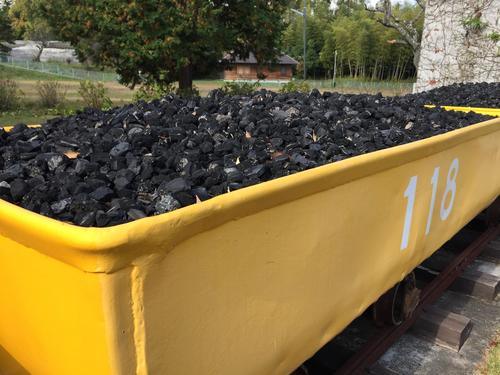
(Shooted at Kikuchi Hiromi Memorial Takahagi Coal Mine Museum (Takahagi City, Ibaraki Prefecture).)
Hiromi decided to move after the house was destroyed by the Great Kanto Earthquake.
The state of the church at that time is recorded as follows.
"With the power of the Rome cloistered Emperor Office, the luxurious Western architecture, there was no way to resist before the earthquake. The earthquake caused the fire, the fire called the wind, and the intense wind fueled the fire and burned up Tokyo. (...On the third day of aftershock, as early as possible, he struck a stake on the site of the burnt ruins of Irifune-cho and set up a ballack. (...Hiromi re-started his work at the ballack as early as possible, and then built a ballack again at the old residence in Akashicho. Since the site is large, open space can be used as a coal storage area. When the church was in a majestic atmosphere, I couldn't say very much about it, and it could be said that the earthquake caused me. Who can imagine that the site where the church was located will be a coal storage area? This Akashicho is surrounded by the Sumida River and digging, so the convenience of water transportation was the best for transporting coal. " (Saotome, pp. 124-126)
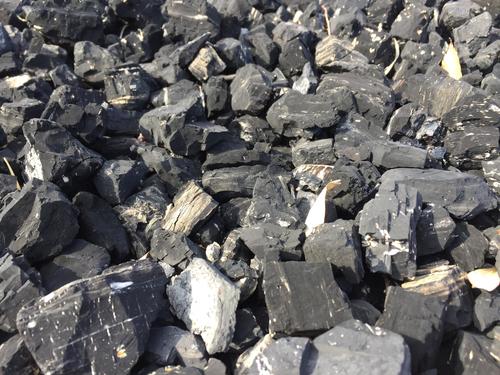
(Shooted at Kikuchi Hiromi Memorial Takahagi Coal Mine Museum (Takahagi City, Ibaraki Prefecture).)
You may not be able to believe it, but the building on the church premises, which was introduced by correspondent Minato-chan the other day.
It was once used as a coal mining office and once became a coal storage area.
It is also a place where you can see the young days of Hiromi Kikuchi, who will later become a billionaire.
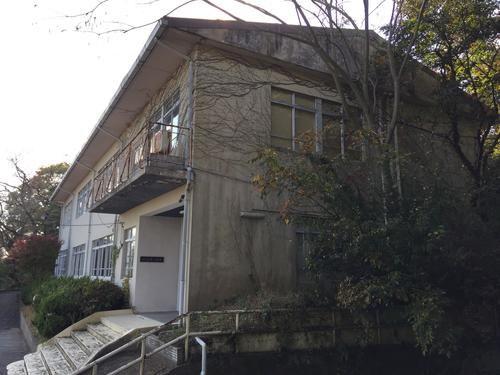
(remain of Takahagi Coal Mine Office)
One time at Tsukiji, a man who supported Japan's development with black diamonds, was there.
There is little left in the existing literature and it is being forgotten.
However, in Tsukiji Akashicho, which has a strong impression as a foreign settlement, it is also on the grounds of the church.
Isn't it a very surprising and interesting story that such a person lived?
In this way, interesting biography is still sleeping in Chuo-ku.
In the future, I would like to "mine" the biography as I dig coal.
[wienerhorn]
December 5, 2018 14:00
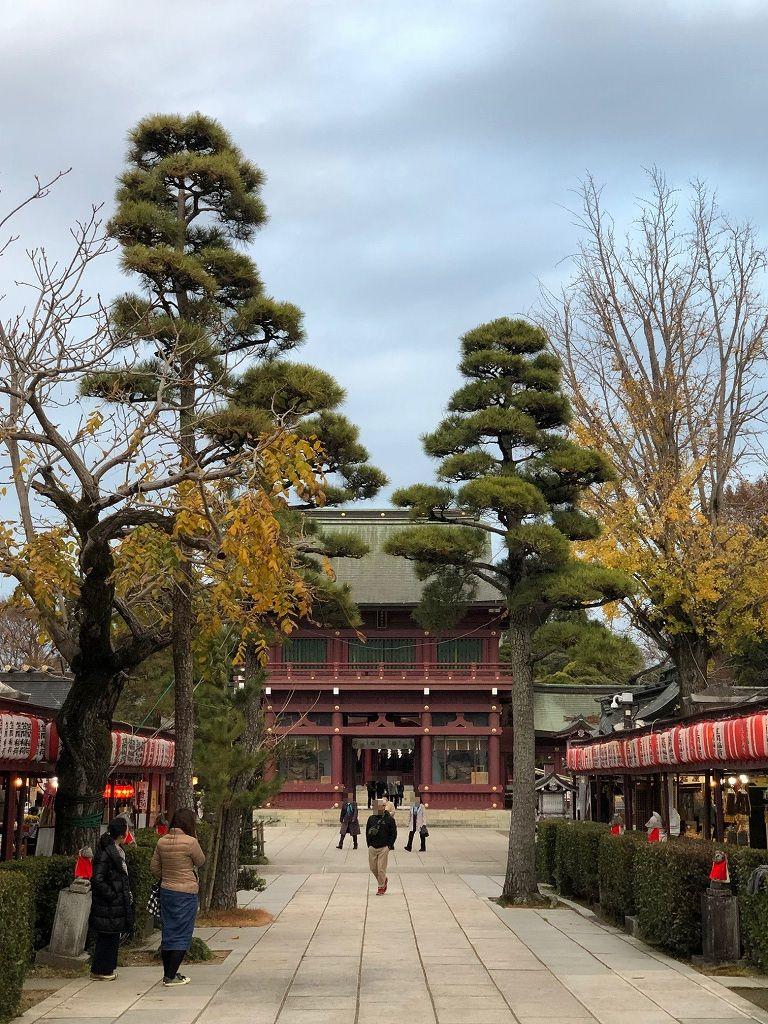
Photo: Kasama Inari Shrine (Kasama City, Ibaraki Prefecture)
Nihonbashi Shichifukujin is located in the vicinity of Tokyo Metro's Suitengumae Station, Ningyocho Station, Kodemmacho Station, and Hamacho Station on the Toei Subway, and if you do your best, you can tour Seven Lucky Gods in an hour. Among them is Kasama Inari Shrine Tokyo Bessha. If you have studied the Chuo-ku Tourism Certification, you know well. It's impressive because it's a long name with 10 characters. It was built at its current location in 1859 in the late Edo period as a branch of Kasama Inari Shrine (Kasama City, Ibaraki Prefecture).
The other day, when I happened to drive in Ibaraki Prefecture, "Kasama Inari Shrine" was displayed on the car navigation system, so this is that! I stopped by in a hurry. It was founded in 651 and is one of the three largest Inari shrines in Japan. It was a very impressive space with a solemn atmosphere, a large shrine, and Nakamise. new year worshipping is coming soon, but many worshiper will come.
1
|
Links
|
![]()
![]() . Go to Kitatama No. 2 Water Reclamation Center in Mazu Kunitachi City, go down about 11m by elevator and walk along the tunnel (about 1km) where communication pipes are laid to see
. Go to Kitatama No. 2 Water Reclamation Center in Mazu Kunitachi City, go down about 11m by elevator and walk along the tunnel (about 1km) where communication pipes are laid to see ![]()
![]()
![]() the Asakawa Water Reclamation Center. Attach a pamphlet from the center and a photo
the Asakawa Water Reclamation Center. Attach a pamphlet from the center and a photo![]()
![]()
![]() of the tunnel on the day. It is said that the diameter is 3.5m after construction using machines used for subway construction and tunnel excavation.
of the tunnel on the day. It is said that the diameter is 3.5m after construction using machines used for subway construction and tunnel excavation.
![]()
![]()
![]() can see this manhole everywhere.
can see this manhole everywhere.![]()
![]()
![]() of a huge reservoir currently under construction. "Second Tagara River Trunk Line Part 2 Construction" Walk 18m and see a huge tunnel under construction. 40,000 cubic meters of rice (how many cups of 25m pool?) It is said that there is a water storage capacity. Please take
of a huge reservoir currently under construction. "Second Tagara River Trunk Line Part 2 Construction" Walk 18m and see a huge tunnel under construction. 40,000 cubic meters of rice (how many cups of 25m pool?) It is said that there is a water storage capacity. Please take ![]()
![]()
![]() a look at the photo. Concrete segments and steel segments are used properly, and curves and other areas are made of steel and finished with concrete later. Drilling work is underway at the end of this tunnel. The rails are used for trolleys to carry out excavated soil.
a look at the photo. Concrete segments and steel segments are used properly, and curves and other areas are made of steel and finished with concrete later. Drilling work is underway at the end of this tunnel. The rails are used for trolleys to carry out excavated soil.









